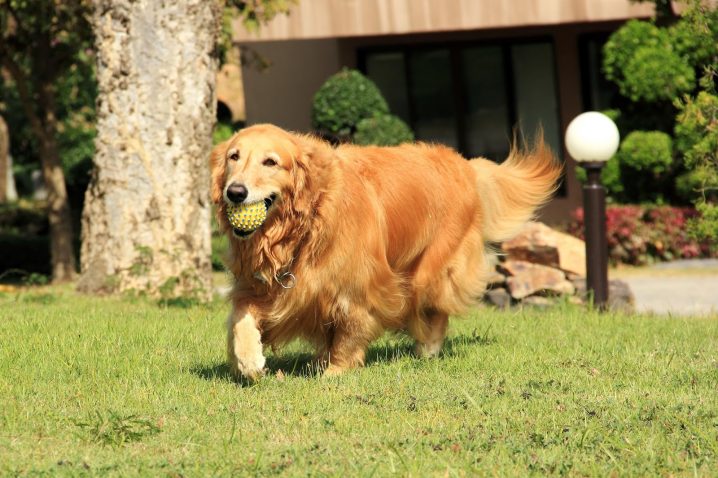By taking some time out to create a safe and enjoyable, pet-friendly outdoor play space, you and your dog can enjoy spending worry-free time together in your front or back yard. Here are some great ideas to transform your yard in fun and secure ways.

Brainstorm Pet-Friendly Yard Additions
The best first step in the process is to pretend you are your dog! Put your canine thinking cap on, go out into your yard, and try to look at it through your dog’s eyes. If your dog is usually hesitant to go out in the yard, think of what is causing the hesitation.
If your dog loves to go out in the yard, identify what is the most compelling reason. Then consider what you’d both need to enjoy the yard. What do you most worry about when your dog is outside and out of your direct line of sight? Write down your concerns to make sure you don’t forget anything as you go along.
Do a Thorough Yard-Safety Check
Now that you have a good idea of what kinds of additions you’d like to make to your yard, it is time to do your safety walk through. First, examine the perimeter. Look for safety issues. If you don’t yet have a fence in place, think about what might best complement the exterior of your home and also provide the most safety for your dog.
Now examine the existing greenery. Can you identify all the plants, shrubs and trees? Many common types of greenery is toxic or even poisonous to dogs. If you can’t identify what is growing, you may need to take help from a knowledgeable friend or landscaping professional. Finally, look for other safety issues, such as uncovered drains, gaps to the underside of the house, sharp landscape border materials, deep water features, exposed (chewable) downspout extenders or landscaping stones that may get burning hot to tender paws in summer.
Out With The Unsafe, In With The Safe!
The safety check you just completed should tell you what needs to go and also give you ideas on what might replace it. The ASPCA has a handy list of toxic plants to avoid when choosing safe and new greenery for your dog. Many pet owners prefer a wooden fence that will remain secure from top to bottom without gaps or holes that could trap paws, noses, or tails.
Also, be sure to install fencing around any water feature that poses a drowning risk. If your dog likes to dig, talk with your fencing professional about installing an extra underground barrier for added protection. If your dog has a tendency to bark because threats are heard but not seen, talk with your fencing professional about installing fence “bubble windows” so your dog can take a peek out at the world. Finally, make sure the gate locks are secure and situated well out of your dog’s reach!
Install Dog-Friendly Yard Accessories
Once you have managed the basic safety and security necessities, you can get to the fun stuff – bringing in yard accessories that your dog will appreciate and love to use! These ideas can be protective of your lawn and landscaping and also be lots of fun for your dog.
- Water station – Many outside pet watering stations can be adapted to work with your garden hose, while others are freestanding options designed to be used outdoors.
- Doggie pool – When it gets hot outside, your dog will enjoy having a pool to splash around in. Alternatively, consider adding a sprinkler extension for your dog to run through.
- Artificial turf – Artificial turf is a great option to lay over hot flagstones and in other areas where your dog might cause damage to your landscaping or grass. You can also use artificial turf as a visual signal and training tool to help with potty training to keep your dog away from off-limits areas like your vegetable garden or prize roses.
- Awning with elevated dog bed – Dogs can’t sweat through their skin the same way that people do. They sweat by panting and releasing moisture through their paws. When temperatures begin to climb, it is important to make sure your dog has a shady, cool place to retreat. Some elevated dog beds (Coolaroos) come with matching awnings or you can mix and match different beds and awnings to give your dog a roomy, shady spot to rest.
- Designated digging area – If your dog loves to dig, consider adding a “dirt box” of sorts, that is just for digging. The rest of your landscaping will thank you for it and so will your happy canine.
With these tips in hand, you can create a true backyard oasis for your pup!



